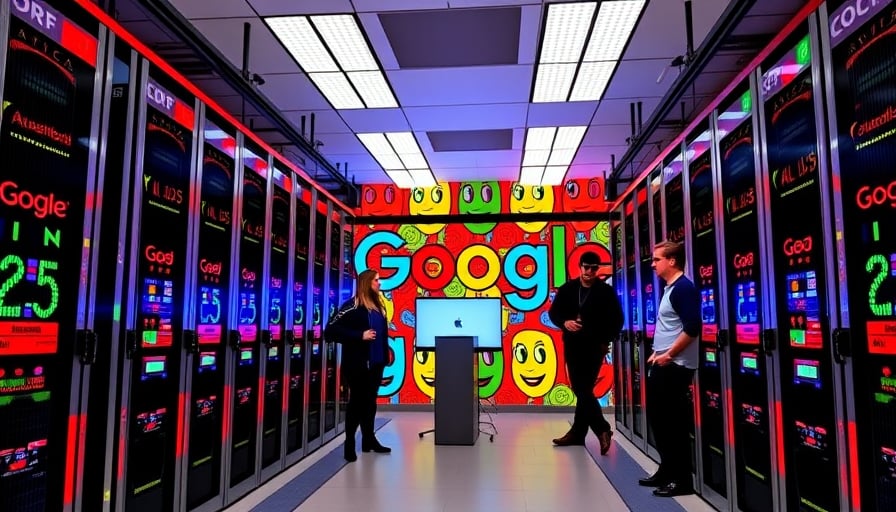Nvidia Corp. Prepares for Third‑Quarter Earnings: Implications for the Technology Landscape
Nvidia Corporation is set to release its third‑quarter earnings report, a performance indicator that many market participants regard as a bellwether for the broader technology and equity sectors. The upcoming filing is expected to provide key insights into current spending patterns on artificial intelligence (AI), a technology that has become the cornerstone of growth narratives across multiple industries.
Market Expectations and Investor Sentiment
Analysts anticipate robust earnings that could validate the prevailing view that the AI boom is sustaining long‑term economic expansion. However, Nvidia’s stock has recently trended lower relative to its peers, prompting traders to scrutinize whether the forthcoming results will recalibrate expectations or amplify concerns about a potential over‑valuation of AI‑centric firms. The outcome is likely to influence the risk appetite of institutional investors who allocate significant capital to AI-driven companies.
Sector‑Specific Dynamics
Semiconductor Industry Nvidia’s revenue stream is heavily dependent on its GPU business, which powers high‑performance computing workloads for data centers, autonomous vehicles, and machine learning. The company’s ability to maintain market leadership in GPU architecture—particularly with the introduction of next‑generation chips—will be a decisive factor in sustaining its competitive edge against rivals such as AMD and Intel.
Artificial Intelligence Applications The AI sector is experiencing rapid adoption across finance, healthcare, and retail. Nvidia’s CUDA platform and Deep Learning Accelerator (DLA) offerings are integral to the deployment of large language models and computer vision solutions. The company’s quarterly earnings will reflect how effectively it has capitalized on this demand surge.
Cloud Infrastructure and Edge Computing As cloud service providers like Amazon Web Services, Microsoft Azure, and Google Cloud expand their AI capabilities, Nvidia’s partnerships in these ecosystems are pivotal. The earnings report will shed light on the company’s revenue contributions from these channels and the scalability of its solutions in edge‑computing scenarios.
Fundamental Business Principles at Play
Revenue Growth vs. Margin Expansion While Nvidia has consistently delivered strong top‑line growth, the sustainability of this trajectory hinges on maintaining healthy gross margins. The report will reveal whether cost pressures from supply chain constraints or increased R&D spend are eroding profitability.
Capital Allocation Efficiency Investors will monitor Nvidia’s capital return policy, including dividends, share repurchases, and reinvestment in research and development. A disciplined approach to capital allocation is essential for preserving investor confidence during periods of market volatility.
Competitive Positioning Nvidia’s strategic investments in AI research, such as its partnership with OpenAI and stake in the Metropolis AI consortium, underscore its commitment to staying ahead of the curve. The earnings release will indicate the success of these initiatives in translating into revenue diversification.
Broader Economic Trends and Inter‑Sector Connectivity
The performance of a leading AI semiconductor company like Nvidia reverberates across multiple economic sectors:
Innovation Spillover Advances in GPU technology accelerate innovation in autonomous driving, robotics, and augmented reality. Positive earnings outcomes can stimulate investment flows into these adjacent industries.
Labor Market Dynamics AI-driven automation affects labor demand across manufacturing and services. Strong earnings may signal continued capital outlays toward automation, potentially influencing wage dynamics and productivity metrics.
Monetary Policy and Valuation Pressures Rising interest rates heighten the sensitivity of growth‑oriented equities to discount rate changes. Nvidia’s earnings will be scrutinized for indications of resilience against macroeconomic tightening, informing broader equity valuation models.
Conclusion
Nvidia’s third‑quarter earnings are positioned to be a critical barometer for the technology sector and the broader equity markets. By analyzing the interplay between AI spending patterns, semiconductor supply dynamics, and corporate fundamentals, market participants will assess whether the AI boom continues to underpin long‑term growth or if signs of market over‑valuation emerge. The forthcoming report will therefore serve as a pivotal touchstone for investors navigating the evolving landscape of technology investment.




